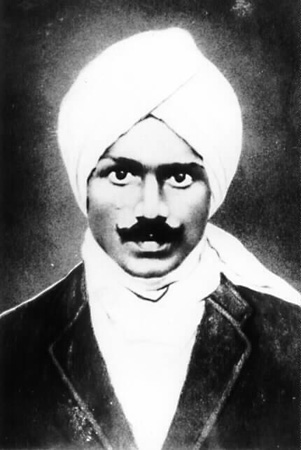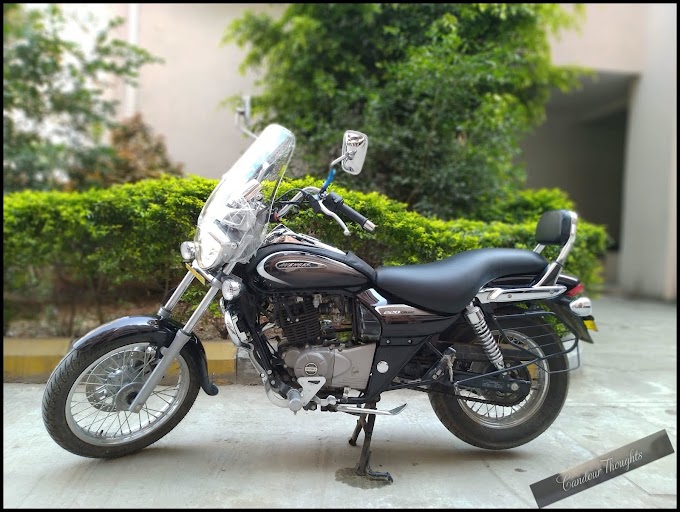This is a short and complete chronological biography of our beloved father
of nation Mahatma Gandhi. An inspirational journey of life till today for the
world.
“Happiness
is when what you think, what you say, and what you do are in harmony.”
Childhood
life
1869
|
Born on October 2, 1869 in Porbandar,
Kathiawar Agency, British India to parents
Father - Karamchand Gandhi, was the Chief
Minister (diwan) of the city of Porbanadar.
Mother – Putlibai
|
1876
|
Early education in Rajkot; betrothed to Kasturbai
Makhanji Kapadia (born April 11, 1869, Porbandar - died February 22, 1944,
Pune)
|
1883
|
In May, 1883 married to Kasturbai at the
age of 13
|
1885
|
Father Karamchand Gandhi died
|
1887
|
In November 1887, graduated from high
school in Ahmedabad. In January 1888, he enrolled at Samaldas College in
Bhavnagar State. In July 1888, his wife Kasturba gave birth to their first
surviving son, Harilal.
|
“A man
is but a product of his thoughts. What he thinks he becomes.”
Life
in London and South Africa
1888
|
4th September, he
sailed from Bombay to London. Gandhi made a vow in front of his mother that
he would abstain from meat, alcohol and women.
|
1889
|
First public speech
in England to a gathering of vegetarian. Joined the London Vegetarian Society
and was elected to its executive committee.
|
1891
|
Became Barrister on
10th June; Sailed back to India and reached Bombay on 7th
July where he received news of his mother’s death.
|
1892
|
Started legal
practice at Rajkot and Bombay
|
1893
|
Muslim merchant in Kathiawar named Dada
Abdullah contacted Gandhi. Abdullah owned a large successful shipping
business in South Africa. His distant cousin in Johannesburg needed a
lawyer. In April 1893, Gandhi aged 23, set sail for South
Africa to be the lawyer for Abdullah's cousin.
|
1894
|
In May 1894, the
Abdullah case of civil suite decided by compromise. New Natal government
discriminatory proposal led to Gandhi extending his original period of stay
in South Africa for campaigning against.
|
1895
|
He helped found the
Natal Indian Congress and through this organisation, he moulded the Indian
community of South Africa into a unified political force.
|
1896
|
Returned from South
Africa to India for six months. Met Indian leaders like Tilak, Gokhale and
others. Went back to South Africa again on 28th November
|
1897
|
In January 1897,
when Gandhi landed in Durban, a mob of white settlers attacked him and he
escaped only through the efforts of the wife of the police superintendent.
However, he refused to press charges against any member of the mob.
|
1899
|
During the Boer War,
Gandhi volunteered in 1900 to form a group of stretcher-bearers as the Natal Indian Ambulance Corps.
|
1901
|
Returned to India.
Organized Public services in plaque affected areas of Rajkot
|
1902
|
Went to Burma.
Started travelling India. Opened an office in Bombay in July. After 3 months
again proceeded to South Africa
|
1903
|
Established
“Transversal British India Association”. Started Publication “Indian Opinion”
|
1904
|
Read Gita and
Ruskin’s ‘Unto this last’ which led to a revolutionary changes in his life.
Established ‘Phoenix’ ashram.
|
1906
|
British declared
war against the Zulu Kingdom in Natal, Gandhi at age 36, sympathised with the
Zulus and encouraged the Indian volunteers to help as an ambulance unit. In
September 1906, Gandhi organised the first Satyagraha campaign to protest
against the Transvaal Asiatic ordinance that was constituted against the
local Indians.
|
1907
|
In June 1907, he
held Satyagraha against the Black Act.
|
1908
|
In 1908, he was
sentenced to jail for organising the non-violent movements. But, after his
meeting with General Smuts, a British Commonwealth statesman, he was
released. However, he was later attacked for this and was again sentenced to
jail against which he organised Satyagraha again.
|
1909
|
Sentenced
to a three-month jail term in Volkshurst and Pretoria. After his release,
Gandhi went to England to seek the assistance of the Indian community there
as second Indian deputation. Wrote his first letter to Tolstoy. While returning
from England wrote “Hind Swaraj” or “Indian Home-rule”.
|
1910
|
Gandhi
established, with the help of his friend Hermann Kallenbach, an idealistic
community they named "Tolstoy Farm" near Johannesburg. There he
nurtured his policy of peaceful resistance.
|
1913
|
Re-started
Satyagrah. Arrested and released. Observed fast.
|
1914
|
Successful
Satyagrah and proceeded to England
|
“The best way to find yourself is to lose
yourself in the service of others.”
Life
with Struggle for Indian independence
1915
|
At the request of
Gopal Krishna Gokhale, Gandhi returned to India. On 25th May, Sabarmathi
Ashram was established
|
1916
|
Joined the Indian
National Congress and was introduced to Indian issues, politics and the
Indian people primarily by Gokhale. First meeting with Jawaharlal Nehru in
Lucknow
|
1917
|
Started Champaran
Satyagrah. The Champaran agitation pitted the local peasantry against their
largely British landlords
|
1918
|
Started Khera
Satyagrah. Kheda was hit by floods and famine and the peasantry was demanding
relief from taxes. Using non-co-operation as a technique, Gandhi initiated a
signature campaign where peasants pledged non-payment of revenue even under
the threat of confiscation of land. Revival of spinning wheel (charkha).
In April 1918,
during the latter part of World War I, the Viceroy invited Gandhi to a War
Conference in Delhi. Gandhi agreed to actively recruit Indians for the war
effort
|
1919
|
Supported Khilafat
movement. Sought political co-operation from Muslims in his fight against
British imperialism by supporting the Ottoman Empire that had been defeated
in the World War I. It offered evidence of inter-communal (Hindu-Muslim)
harmony in joint Rowlatt satyagraha demonstration rallies (Rowlatt act). 30
March 1919, British law officers opened fire on an assembly of unarmed
people, peacefully gathered, participating in satyagraha in Delhi.
On 6 April 1919, a
Hindu festival day, he asked a crowd to remember not to injure or kill
British people, but to express their frustration with peace, to boycott
British goods and burn any British clothing they owned.
On 9 April, Gandhi
was arrested.
On 13 April 1919, people including women with children gathered in an Amritsar park, and a British officer named Reginald Dyer surrounded them and ordered his troops to fire on them. The resulting Jallianwala Bagh massacre. |
1920
|
Started non-cooperation
movement. Gandhi took leadership of the Congress
|
1922
|
Revolt of
chaurichaura on 5th February. On 10 March 1922, Gandhi was tried
for sedition, and sentenced to six years' imprisonment. He began his sentence
on 18 March 1922.
|
1924
|
Early release from
prison for political crimes in 1924,
|
1928
|
Protest against The
Simon Commission- a group of 7 MPs from Britain who was sent to India in 1928
to study constitutional reforms and make recommendations to the government.
Bardoli Satyagrah
against the raised tax
|
1929
|
Resolution of
complete Independence was passed in Lahore Congress Session. On 31 December
1929, the flag of India was unfurled in Lahore.
|
1930
|
Gandhi led Congress
celebrated 26 January 1930 as India's Independence Day in Lahore. Dandi
March, which began on 12th March 1930 and ended on April 6th, 1930. Dandi
March or Salt Satyagraha was a non-violent means of protest led by Mahatma
Gandhi which garnered huge public
support and worldwide attention. Gandhiji walked from his ashram in Sabarmati
in today’s Gujarat to small town of Dandi near coastal Surat to protest
against the repressive salt tax imposed by the colonial government. This
march covering the distance of roughly 385 km worked as a catalyst for
India’s struggle for Independence.
|
1931
|
Lord Irwin, decided
to negotiate with Gandhi. The Gandhi–Irwin Pact was signed in March 1931. The
British Government agreed to free all political prisoners, in return for the
suspension of the civil disobedience movement. According to the pact, Gandhi
was invited to attend the Round Table Conference in London
|
1933
|
Founds the weekly
paper Harijan, published in English and Hindi.
|
1934
|
Announces decision
to retire from politics from October I to engage himself in development of
village industries, Harijan service and education through basic crafts
|
1936
|
Settles down at
Sevagram, a village near Wardha in the Central Provinces, Making it his
headquarters.
|
1942
|
Appealed British
Government to quit India and started Quit India movement. Arrested and interned
in Aga Khan’s Palace at Poona.
|
1944
|
Kasturba Gandhi
dies in Aga Khan’s Palace. Released unconditionally. Carries on talks with M.
A. Jinnah regarding Pakistan.
|
1945
|
Tours Bengal and
Assam
|
1946
|
Tours Southern
India for anti-untouchability and Hindustani propaganda. Revives Harijan and
allied group of weekly journals. Simla Conference session; deliberations
prove infructuous. Cabinet Mission plan and discussion. The ‘Great Calcutta
Killing’. Leaves for Calcutta. Riots break out in Bihar.
|
1947
|
In Bihar, touring
riot-affected areas. Declares peace must precede partition, he would not be
party to India’s vivisection. Gandhiji writes to Mountbatten, with Pakistan
conceded, to persuade Jinna to amicably settle all outstanding points with
Congress. ‘Independence of India Bill’ passed. Hails following day as one of
rejoicing for deliverance from, British bondage; but deplores Partition.
Pakistan is born. Hindu-Muslim fraternization in Calcutta.
|
1948
|
Decides to fast for
communal peace in Delhi; Mountbatten fails to dissuade Gandhiji. On 20th
Jan bomb explodes at prayer meeting. On 30th is assassinated on
way to evening prayer.
|
“Nobody can hurt me without my permission”
Tags: Mahatma Gandhi, Biography, Non-violence,
Inspiration, Students, Teacher, competitive exam











0 Comments